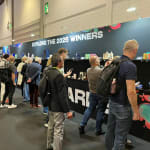
At London Packaging Week 2025, speakers and exhibitors returned to fundamentals, packaging as a human-centred interface that must be inclusive, intentional and transparent. The program and show floor showcased design choices in materials, form and sensory experience that influence accessibility, brand expression and sustainability. The account reported here is attributed to James Clarke, Senior Account Manager at Think B2B Marketing. Discussion coalesced around three intertwined pillars, design for all, craft and intentionality, and openness about trade-offs, alongside a visible trend toward second-life formats that extend use beyond the point of sale. Across luxury and mass-market contexts, participants emphasized empathy, engineering rigour and practical collaboration with suppliers to balance protection, aesthetics and environmental objectives. With consumers making an estimated 50 to 100 direct interactions with packs each day, the stakes for usability and clarity are high. Speakers argued that inclusive features, tactile cues and intuitive openings should be embedded as standard practice, not treated as niche adaptations. In parallel, the luxury segment examined how to maintain crafted experiences under cost and supply constraints by rethinking structures, reducing layers, selecting recyclable or certified materials where appropriate and designing packaging that customers actively keep.
Inclusive packaging as a given
One of the defining themes was Design for All, described as “championing inclusive, accessible and representative packaging, designing for a world that reflects everyone.” Kevin Marshall, Senior Creative Director at Microsoft, outlined how inclusive design and accessibility are playing an increasing role in packaging experiences and in professional practice. “Designing with all people in mind is challenging, it’s deeply humbling, but it’s always incredibly rewarding,” he said. “Inclusive design doesn’t just open our products and experiences to more people, it reflects how people really are. And that’s meaningful.”
Speakers stressed that each interaction with packaging is a chance to include or exclude. Decisions on grip, readability, intuitive opening and tactile feedback can raise or lower barriers. The consensus framed inclusive packaging not as a specialist category but as good design. Lucy Edwards, founder of inclusive beauty brand Etia, summarised the approach, “For my brand, packaging is the thing we focus on the most. How can we make our packs aesthetic, but also universally designed for everybody?”

Craft, creativity and intentionality
The luxury market was strongly represented and, as Show Director Josh Brooks noted, “every year it feels a little bit more luxury.” While economic pressures continue to shape expectations and behaviour, speakers positioned constraints as catalysts for new approaches. For Davide Cerrato, CEO of Bremont Watches, authenticity is central, “For us, our British heritage and identity is super important. It’s important to stay true to who you are, enriching elements of your story with new elements that are future proof.”
Heritage brands and independent jewellers discussed the need for protective packaging that survives shipping, appeals aesthetically and is desirable enough to keep. By rethinking the packaging ecosystem, removing unnecessary layers, using recyclable FSC certified materials and designing bespoke boxes, brands can progress without compromising quality or sustainability. Joanna Miller, CEO of Garrards, said, “We knew we wanted to do something different with our packaging and we wanted to make it more sustainable.”
Intentionality also guided sensory and emotional design. Vincent Villéger, a designer specialising in luxury and beauty packaging, product and retail design, noted, “When somebody interacts with their packaging, they feel a certain way because that’s the way, as designers, we decided we wanted them to feel.” The objective is to create experiences that evoke specific emotions, from surprise and wonder to reassurance, aligning engineering and craft so that details invite interaction through texture, precision and quiet intelligence.
Transparency, trust and the return to the real
Honesty and openness featured prominently, reflecting a wider learning mindset in luxury packaging. As Yvonne observed, “None of us have a solution and we can't pretend that we do. It's important to be open, candid, and keep learning together.” Echoing this, Nick Vaus, Co-founder and Managing Partner at Free The Birds, said, “Education has to start with packaging companies. Designers, when they’re making choices, can be all over the place. Everyone has to be really honest about things they’ve learned and things they’ve been caught out on.”
Speakers advocated for transparency about compromises, for example when a material or closure cannot yet be replaced for performance or recyclability reasons. Steps like removing magnets or choosing environmentally conscious laminates can introduce new challenges such as packs breaking in transit, underscoring the balance between durability, quality and aesthetics. Fortnum & Mason highlighted the value of storytelling, artisanal techniques and tactile experiences as differentiators in a digital world. As Yvonne reflected, “It just became a vehicle to transport goods in. But actually, this in itself, is a beautiful thing and it’s kept in everyone’s home.” Collaboration with suppliers was described as multifaceted, prioritising creativity, joint problem-solving and shared success, with shows like London Packaging Week facilitating cross-sector exchange.
Second life and collectability
A standout trend was second-life packaging, from tote bags, vanity cases and refillable bottles to whisky boxes and watering cans designed to be transformed into vases. These formats extend beyond protection to become part of consumers’ homes, rituals and memories. On the show floor, more than 200 exhibitors offered lessons in craft, innovation and engagement, with thousands of packs demonstrating how thoughtful design can encourage use and appreciation well after purchase.
This focus on longevity positions packaging as an extension of product identity. If it is worth keeping, it is worth remembering. The event message was that inclusive design, craftsmanship, engineering, transparency and emotional storytelling are not competing priorities. Combined, they support intentional, human-centred design that people interact with, appreciate and keep.



